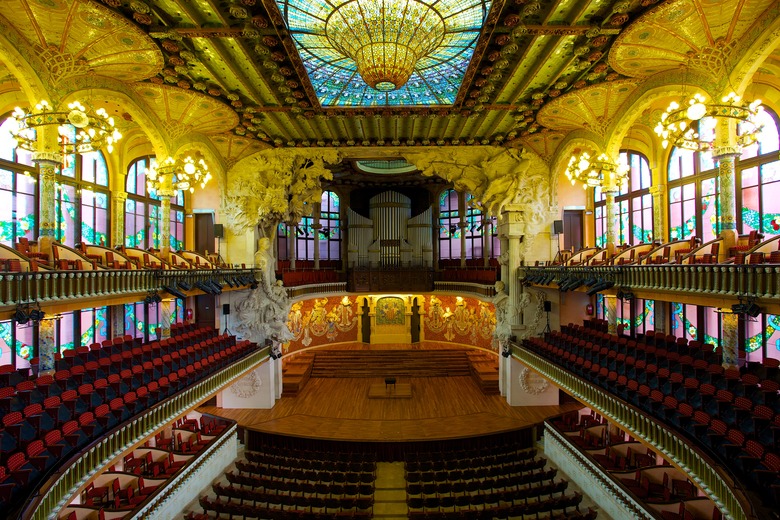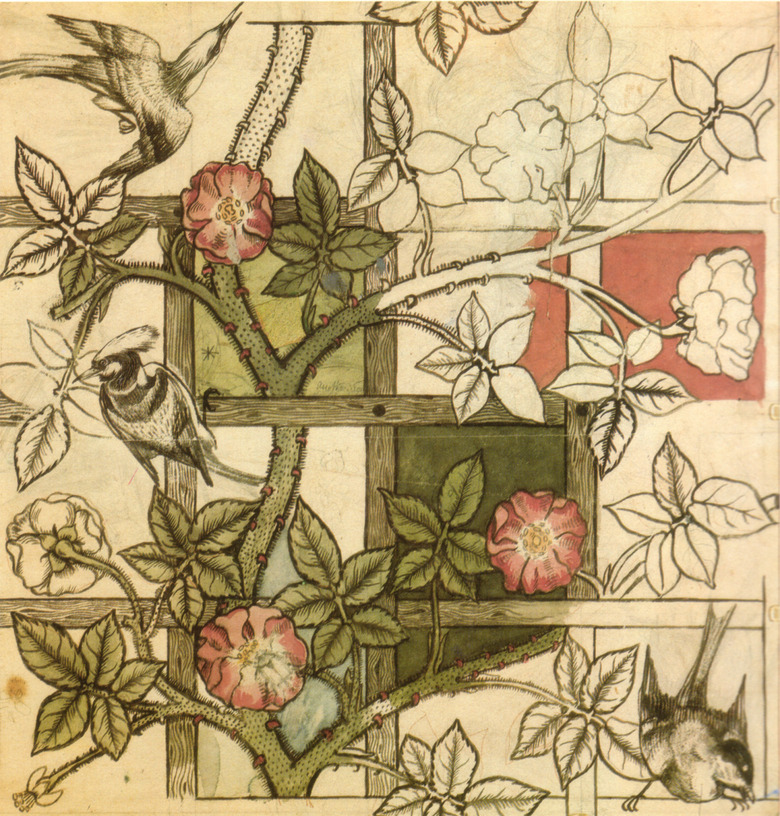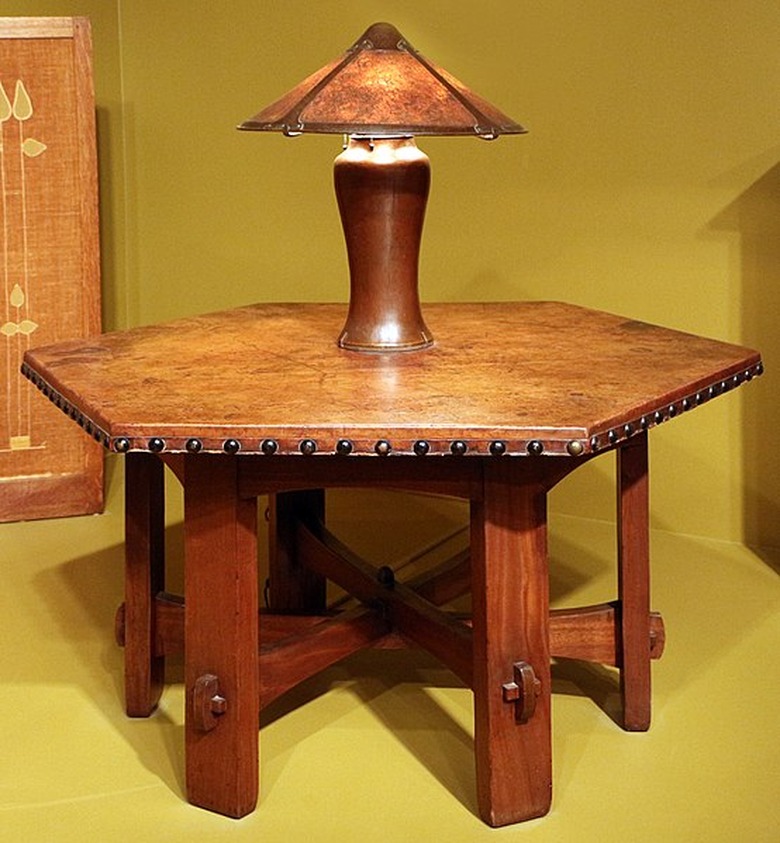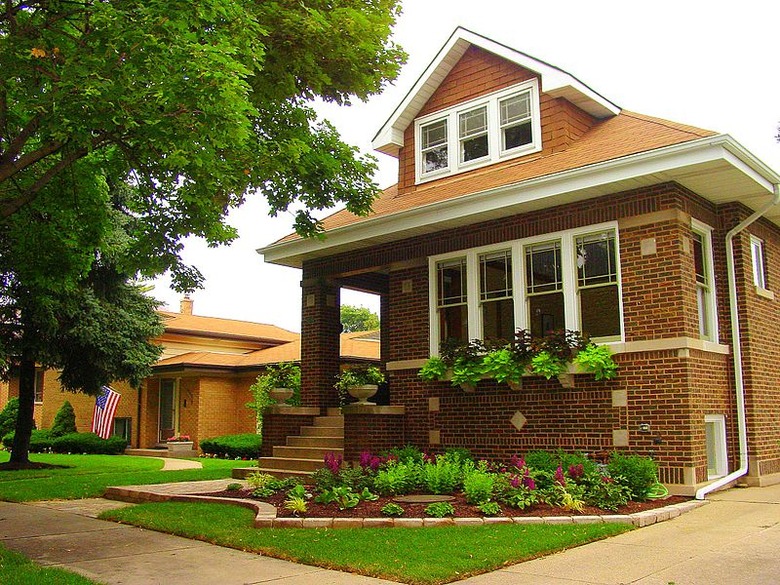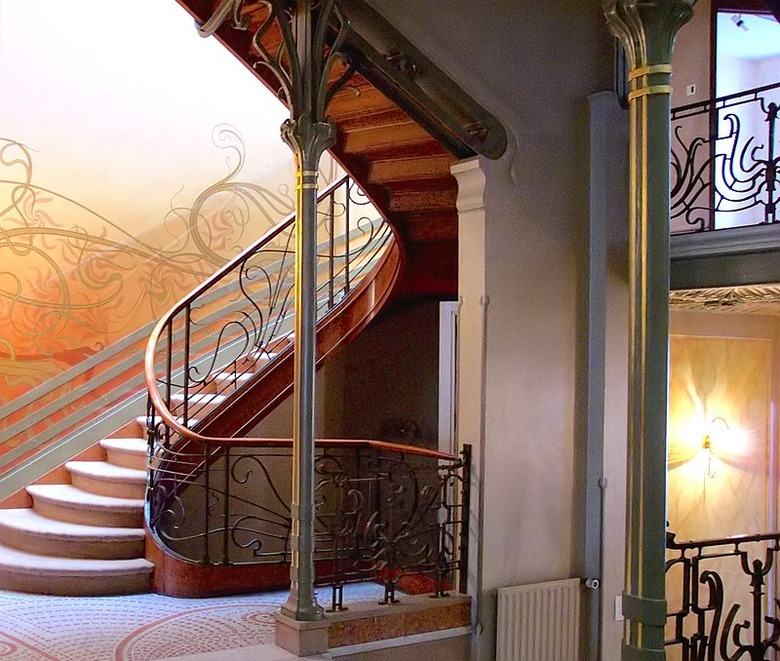Arts And Crafts Vs. Art Nouveau: Two Iconic Styles, One Major Difference
Arts and crafts and art nouveau are two intertwined design movements from the turn of the 20th century. While both were a reaction to the Industrial Revolution that focused on the notion of artisanal craftsmanship and drew inspiration in nature, they differed greatly in their execution. We're taking a closer look at these styles and their differences.
What Is Arts and Crafts?
What Is Arts and Crafts?
During the mid-to-late 19th century, Great Britain was in the midst of the Industrial Revolution. While this innovative period was crucial for the development of technology, a number of designers and artists were determined to create a countermovement that focused on craftsmanship — this would become the arts and crafts style.
The movement started in the decorative and fine arts worlds, where artisans and artists drew not only from folk styles, but also from medieval architecture, which was promoted "as a model for honest craftsmanship and quality materials," as independent scholar Monica Obinski writes for the Metropolitan Museum. Influential figures like art critic John Ruskin, architect Augustin Pugin, and designer William Morris praised Gothic Revival ideals of anti-industrialization in both the design sphere and in society.
As far as arts and crafts aesthetics go, Morris was perhaps the most instrumental in creating an early visual vocabulary for the style. Blending fine arts with design in his works — Morris was best known for his textile work and wallpapers — he promoted a simple aesthetic informed by natural elements, using many floral-inspired rectilinear patterns.
But the movement as a whole was always more about the method of production (i.e., the handiwork and craftsmanship) rather than a specific visual language. Beyond textiles and furniture, arts and crafts was popular in woodworking, jewelry-making, ceramics, metal-smithing, and even stained-glass windows, among many other craft fields. And regional differences meant new aesthetics were incorporated into the style as it spread throughout the world.
In 1920s Japan, the Mingei movement promoted simple, handcrafted designs for utilitarian objects. In the United States, the arts and crafts influence was seen at the turn of the century mostly through the architecture and interiors as the American Craftsman style. Craftsman homes, also called Craftsman bungalows, feature low-pitched gabled roofs, large front porches, tapered columns, earthy colors, and natural wood and stone elements, often produced by hand.
What Is Art Nouveau?
What Is Art Nouveau?
Art nouveau was directly inspired by the arts and crafts movement, particularly when it came to fine craftsmanship, the blurring of the lines between fine art and design, and the inspiration from nature. But it took its design aesthetics to a much more dramatic level.
The style is largely defined by curving lines that recall floral patterns, whether that's through sinuous balustrades on a staircase or vine-like flourishes in textile patterns or poster designs. A secondary source of inspiration was Japonisme, a French term for the focus on and influence of Japanese art. Beyond the dramatic use of whiplash-like lines, art nouveau works often shared some common hues, including gold and jewel tones for a sense of richness.
Though the movement started in the late 18th century, it achieved global recognition at the 1900 Exposition Universelle in Paris, and continued to be popular for another two decades. Art nouveau was a defining style across Europe in the decorative arts (the glasswork of Louis Comfort Tiffany), fine arts (painter Édouard Vuillard), furniture, architecture (Antoni Gaudí), and even jewelry (René Lalique). It was also particularly popular in graphic design — thanks to the industrial advances of the era, printing was more common than ever, allowing for the dissemination of art nouveau prints by such artists as Henri de Toulouse-Lautrec and Alphonse Mucha.
Whereas arts and crafts focused on the simplicity of nature, art nouveau was all about heightening its drama — the key difference between the two styles.
